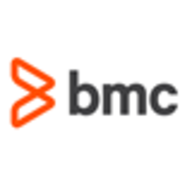

Flux and BMC Control-M Managed File Transfer compete in the enterprise file transfer management category. BMC Control-M appears to have the upper hand due to its comprehensive feature set appealing to organizations seeking robust solutions, despite a higher cost of ownership.
Features: Flux provides a low-code automation platform, integrates with multiple applications, and is scalable across various operating systems. BMC Control-M offers advanced monitoring capabilities, customizable security features, and enhanced data protection compliance.
Ease of Deployment and Customer Service: Flux supports on-premise or cloud-based deployment, making integration simplistic with responsive customer service for problem-solving efficiency. BMC Control-M provides a hybrid deployment model with extensive documentation and training, facilitating smoother onboarding despite complexity. Customer service is consistent but may need premium plans for prioritized support.
Pricing and ROI: Flux has a lower initial setup cost appealing to smaller organizations, ensuring satisfactory ROI through reduced operational overheads. BMC Control-M, with a higher setup cost, offers extensive functionality and performance reliability, leading to a higher ROI owing to streamlined operations and superior data management.

Control-M Managed File Transfer is a market leader in the field of building, scheduling, and managing internal and external file transfers. Users of this solution are able to automate whole portions of the transfer process. They can set up a dynamic scheduling feature, which will activate once a transfer operation has concluded. This automatically updates the schedule of activities that your system is supposed to perform. However, this feature does not stop with simply setting a schedule. After the schedule is updated, the system will set those activities in motion. The automation relieves you of the need to assign a team to write scripts or any kind of manual work. This will ensure that everything runs on schedule while at the same time reducing the amount of resources necessary to make that happen.
Control-M Managed File Transfer has a simplified and unified dashboard. Users are able to view and access all of the system’s file transfer information. This platform provides a high level of visibility and intuitive use. It ensures that users will be able to view any stage of their file transfer operations at any time that they wish. Users can conduct a quick search with specific pre-set search options and find any piece of information they might require.
Key Features
Some of Control-M Managed File Transfer’s key features include:
Reviews from Real Users
Control-M Managed File Transfer stands out among its competitors for a number of reasons. Two major ones are the robustness of the solution and its ability to integrate easily with other related programs. It is constantly being upgraded to meet the varied needs of its users.
A software engineer at a computer software company notes the robust nature of this solution when he writes, “This solution has a vast amount of features, and with every new release, there are lots of new features introduced. The application has high availability - we have multiple customers and it's highly available. On an application level, if something goes down with the primary, then the application goes over to the secondary, so it's very, very easy to do disaster recovery.”
Another PeerSpot user, who is an RPA-WLA BU director at a tech services company, takes note of how easy it is to use Control-M Managed File Transfer in conjunction with other products. They point out, “It is easy to use and integrate with different solutions. It is a good solution that is easy to implement and deliver.”
Flux is an essential tool for data migration, system integration, and real-time data processing, offering scalable solutions that support large datasets and streamline workflows.
Users leverage Flux for managing complex environments with large datasets, automating workflows, and enhancing data consistency across platforms. Its capabilities in real-time data processing, synchronization between different systems, and operational efficiency improvement are frequently highlighted. Users commonly find it flexible and reliable, appreciating its performance in managing scheduled tasks and simplifying data orchestration.
What are Flux's key features?Flux is used across industries like finance, healthcare, and logistics for streamlined operations and optimized data management. In finance, it supports data integrity and compliance. Healthcare organizations use it for real-time patient data processing and integration with various systems. Logistics benefit from improved tracking and coordination.
We monitor all Managed File Transfer (MFT) reviews to prevent fraudulent reviews and keep review quality high. We do not post reviews by company employees or direct competitors. We validate each review for authenticity via cross-reference with LinkedIn, and personal follow-up with the reviewer when necessary.